Kayak paddles are crucial pieces of tools needed when kayaking. But do kayak paddles float? Beyond the ability of a kayak paddle to aid the propulsion of a kayak, kayakers, especially beginners, have become concerned about the buoyancy of this vital tool.
Well, it’s a good thing that you have laid your hands on this article as your question will be answered. You will know if kayak paddles float as well as the factors that affect their buoyancy. There are risks of you losing your paddle too but this article will teach you how to handle the loss of your paddle.
You will see what steps to take and what things to use to avoid losing your paddle and we would gladly share kayaking safety tips to prevent hazards.
Table of Contents
Do Kayak Paddles Float
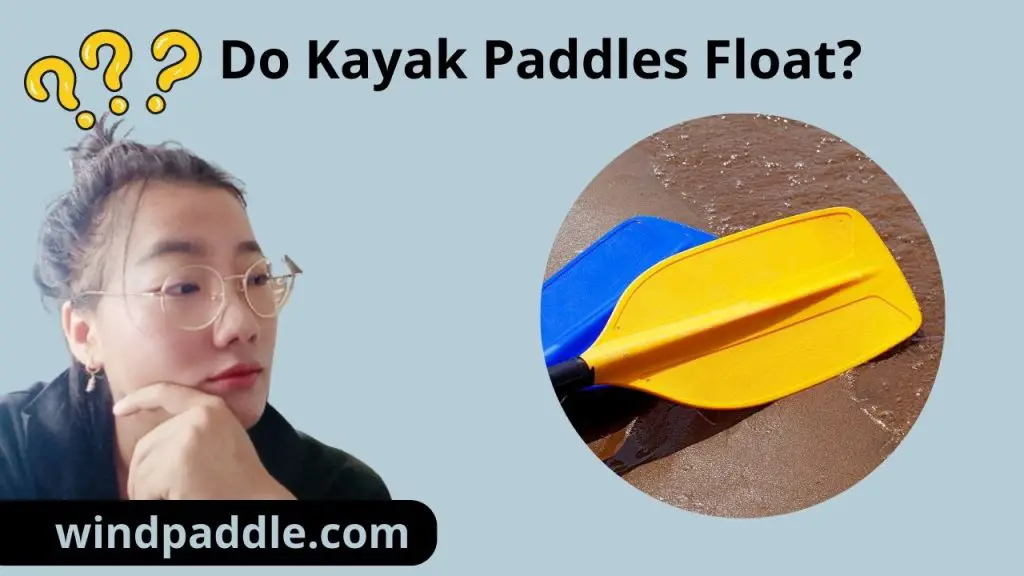
This is not a yes or no question as the answer is dependent on the type of paddles. They appear in different forms and have varying degrees of floatation.
Most paddles, regardless of their built materials are designed with buoyancy in mind. So, unless there is a flaw in the design, your paddle will float in the water.
However, if your paddle fails to float, then you should consider getting a kayak paddle float or a floating grip. Any of these would aid comfort as well as visibility in case you lose your paddle.
Factors That Affect the Buoyancy of Paddles
When you see kayak paddles float, there are factors responsible for their buoyancy and they are :
- Material
- Shape
- Weight
- Blade feathering
Material
Floatation differs based on the type of material used to manufacture the paddle and the material used also dictates the price. Aluminum paddles are not all that expensive and they do not do too well with buoyancy. They owe their little buoyancy to the plastic blades on each end which may not always be sufficient.
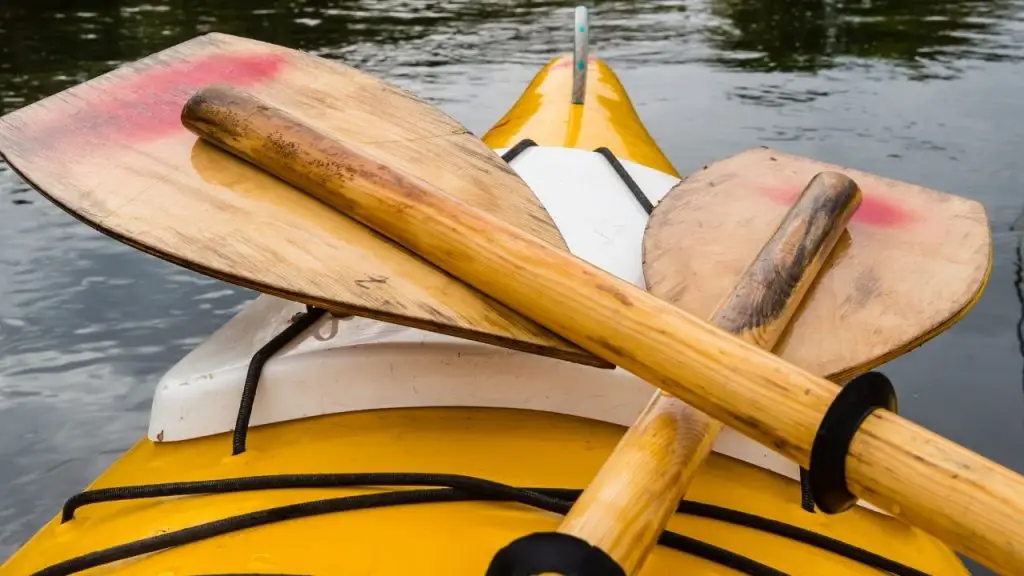
So with an aluminum paddle, there is a higher probability of sinking than with high-end paddles. Paddling becomes easy and buoyancy gets improved when the blade of your paddle is built with high-end plastic or fiberglass with carbon fiber shafts.
While fiberglass paddles are heavy, they are not as expensive as lightweight carbon fiber paddles. Thus, carbon fiber paddles are more expensive than both aluminum paddles and fiberglass paddles.
Talking about the natural fibers in kayak paddles, different manufacturers use different structures to aid more buoyancy. Floatation foams are built in paddles, thus giving extra buoyancy which reduces the force required to swing the paddle to another stroke. No doubt, paddles with these floatation foams do better with floating.
Although rare, wooden paddles are still being used. They are heavier than the modern paddles we have currently and they owe their bulkiness to their composition of fine wood. However, they do not sink completely because they are made of wood.
BENDING BRANCHES Impression Wood 2-Piece Kayak Paddle
Shape
When shape is mentioned as one of the factors affecting the buoyancy of kayak paddles we do not mean the shaft’s shape. Rather, we are talking about the shape and the size of the blade. An increased surface area implies a better buoyancy for your paddle.
Although symmetrical blades are not optimal for kayaking, their large surface area makes them float better. While asymmetrical blades on the other hand are better performers, giving you a more even push.
Some designs of modern paddles may eventually sink. However, you will have ample time to retrieve the paddle before it completely sinks into the water.
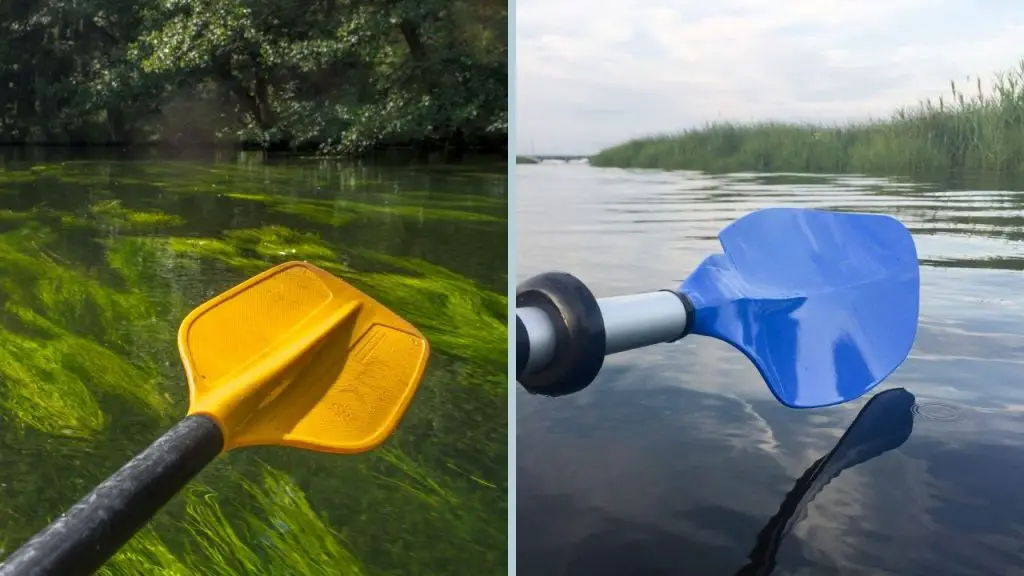
Weight
We put into consideration the entire weight and density when talking about the buoyancy of paddles. Paddles at the lower end of the price spectrum will weigh more than those with an increased price tag.
In addition to the actual weight, swing weight should also be put into account. The perceived weight of the paddle when it is in motion is called the swing weight.
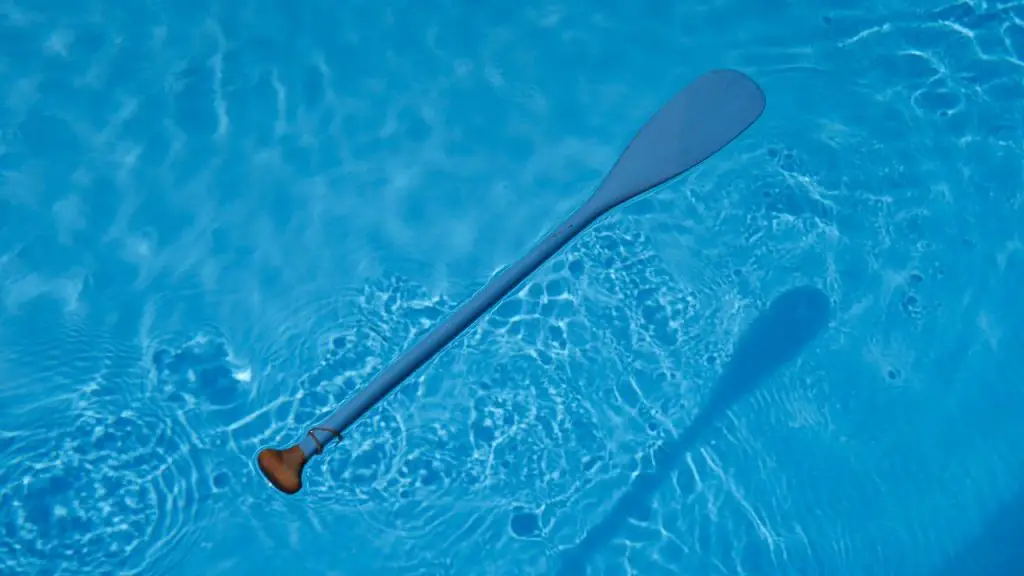
The swing weight does not always scale with the paddle’s absolute weight because of other factors like the downhill and upturn slope, water resistance, and gravity.
An increase in the size of the paddle leads to an increase in the swing weight. This affects floatation as a bigger paddle also implies a larger surface area.
You may need more force to paddle if there is more water protection, but this also means better floatation for your kayak paddle.
Blade Feathering
Talking about the appearance, a paddle may be matched or feathered. The orientation of a matched paddle is in the same direction, resulting in a symmetrical paddle. While the blades of a feathered paddle are tilted distinctly, thus increasing the strokes.
The blade will trim more easily into the air and out of the water, to enhance more effective stroke and the blades of most paddles can be turned to match or feather them.
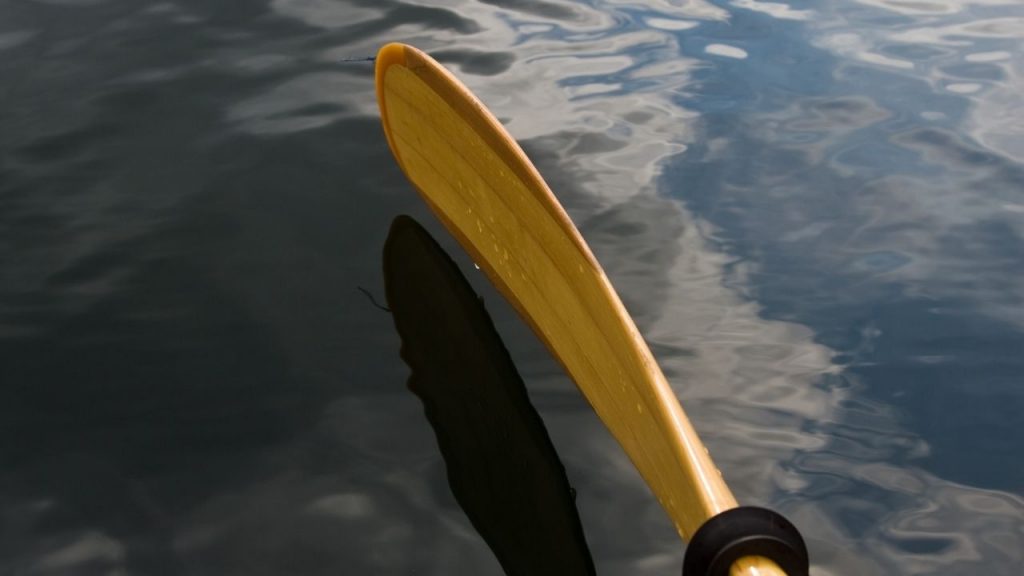
Most times, paddles that can be adjusted come with a few fixed angles that you can pick from. However, some paddles allow you the freedom to control the rotation of the blades.
Here, the surface area is also important as the more feathered your paddle’s blade is, the more prone your paddle is to sinking.
What Happens If You Lose Paddles (Paddles Skin)?
Your paddle can get knocked out of your hands by a big wave or a strong gust of wind. And if it sinks, you could be stranded in the middle of the sea. During that disturbing moment, you need to be calm to know where your paddle fell.
If it fell within a few meters from where the disturbance took place, you probably just have to swim to get it. If it is too far from you, then you might have to dive after it.
How to Avoid Losing your Paddle When Kayaking
Losing your paddle can be very worrisome and disturbing as you may get stuck without this essential tool in your hand.
So, to avoid losing your paddle when kayaking, you need to use a kayak paddle float or a paddle leash.
You also need to learn a good paddling technique, have a good size paddle as well as sit properly in your kayak seat.
Use a Kayak Paddle float
A kayak paddle float is a life-saving device that helps kayakers stay afloat when on the water. With it, paddles can create enough buoyancy without sinking.
There are two molded rubber side pieces that are joined together on the sides of a kayak paddle float to ensure that it floats vertically. It often comes with the purchase of a kayak with instructions on how to use it.
Beyond keeping your paddle afloat, a kayak paddle float gives buoyancy when you fall into the water, are too tired to swim, or wish to rest over your paddle.
You secure your paddle float to the side of your kayak using one end of the paddle and when the boat is underwater, it prevents it from filling with water by simply rising to the surface.
Palm Kayak or Kayaking – Paddle Float RED
Use a Paddle Leash
Your days of panic are over when you get yourself a paddle leash. You do not have to worry about getting wet or losing your paddle to the water. Yes, that’s because a paddle leash helps your Kayak’s paddle to stay secured.
Using it involves attaching your kayak, clothes, or life jacket to the end of the leash where there is a carabineer hook or clip. You can connect it underneath your Kayak’s seat if your kayak lacks D rings for attachment.
You can also get a rope wrapped around your kayak and bind it to the leash. If possible, get paddle leashes with extra ropes or strings that your paddle can be attached to.
Seattle Sports Multi Leash
Kayaking Safety Tips
Following safety tips can keep you from potential danger and here are some for you to follow while kayaking:
- As a beginner, never paddle alone
- Stay sober
- Always wear your protective gear and most especially your life jacket
- Know your kayaking abilities
- Always be aware of the weather so that you won’t be caught in bad weather or rough water conditions
FAQs
Are paddles supposed to float?
Yes, kayak paddles are supposed to float. However, based on their built materials and other factors, different kayak paddles have varying degrees of buoyancy.
Can kayak paddles sink?
In general, if your kayak paddle is made up of good material like carbon fiber or fiberglass it will float. However, a nylon, plastic, or aluminum paddle will most likely sink.
Can a paddle sink?
Yes, a paddle can sink depending on the kind of materials used for its manufacture.
Do Bending Branches paddles float?
Yes, all bending branches float due to the natural buoyancy of wood. Their composite paddles are incorporated with foam plugs that keep the shaft afloat as the air gets trapped inside.
Do wooden paddles float?
Although rare and bulky, wooden paddles float because they are made of wood.
Wrapping Up
Kayaking could get dangerous when you are without an important tool like your kayak paddle. Thus, for safety purposes, it is necessary to know if your kayak paddle can float and what devices can help it keep afloat. Fortunately, all of these have been addressed by this article.



